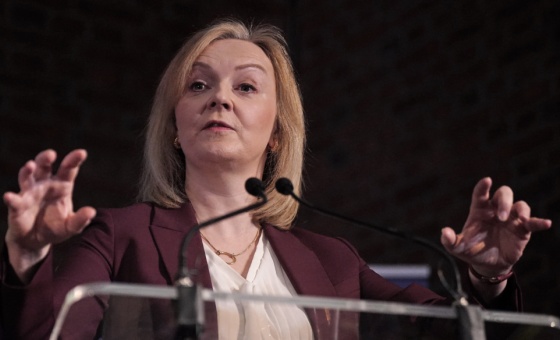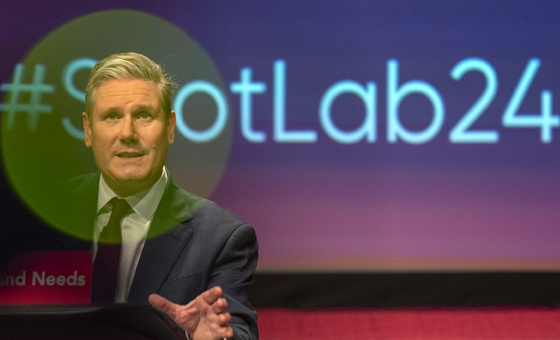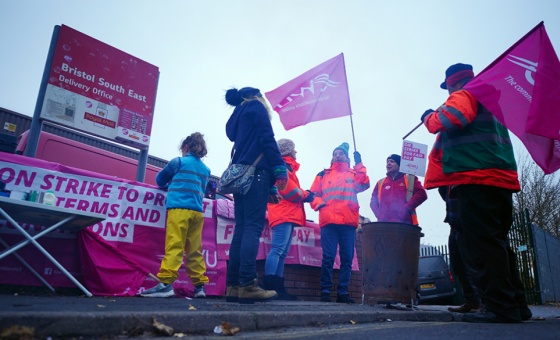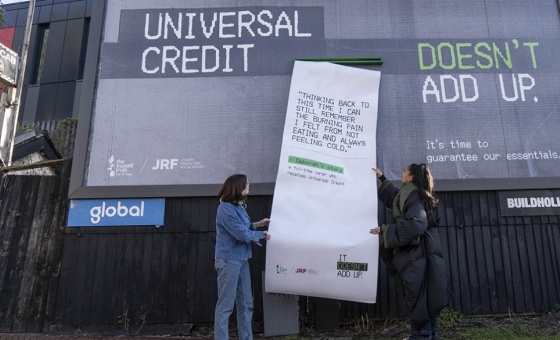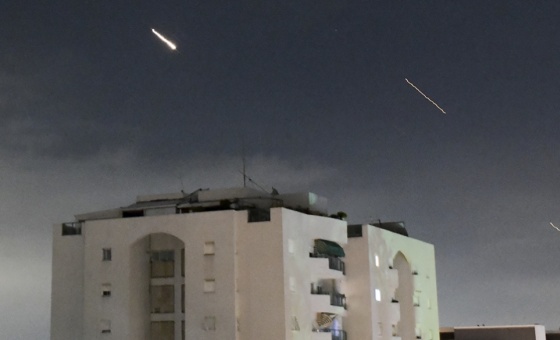This is the last article you can read this month
You can read more article this month
You can read more articles this month
Sorry your limit is up for this month
Reset on:
Please help support the Morning Star by subscribing here
AS DIEGO Maradona turned 60 on October 30 2020, he made an appearance at what would be his final football match.
He was in football until the end and, in his role as manager of La Plata-based side Gimnasia, emerged before kick-off to receive birthday wishes ahead of a 3-0 victory against Patronato.
He didn’t stay around for the full game due to ill health but was listed as the club’s manager, appearing on an official team sheet for the last time.
After taking charge at Gimnasia towards the end of 2019, Maradona was occasionally seen on the touchline in a throne-like chair. He was provided with one such seat at Newell’s Old Boys when Gimnasia faced them around the time of his 59th birthday.
His time as a manager was a chance for Argentine clubs to pay homage to him whenever he visited. Broadcasters set up a Maradona-cam for those who wanted to follow him rather than the football itself during Gimnasia matches.
Maradona was treated like a king in his final year, but for most of his life was worshipped as a god.
The Professional League Cup, the competition in which Gimnasia and other Argentine sides have been playing this past month, has now been renamed the Copa Diego Armando Maradona following his death on November 25.
It will be one of countless tributes and homages to a global icon, adding to those already in existence around the world.
***
Images of Maradona’s early days in professional football in Argentina often show him in the iconic blue and gold of Boca Juniors, but it was in the red of Argentinos Juniors that he first made his name.
He did so even before his senior debut. As a ball boy at the club based in La Paternal, a barrio in central Buenos Aires, he showed off his skills on the touchline, often becoming the half-time entertainment.
After making his Argentinos Juniors debut as a 15-year-old in 1976, he spent five years at the club and in his final season scored 43 goals in 45 games.
From the Estadio Juan Carmelo Zerillo where he made that last appearance, to Argentinos Juniors’ stadium — now named after him — where he first emerged, the football grounds Maradona graced will be his home for as long as they remain standing.
In Naples — where during an eight-year spell Maradona inspired Napoli to two Serie A titles, a Coppa Italia, and a Uefa Cup — San Paolo stadium will be renamed to Stadio Diego Armando Maradona.
At La Bombonera, home to Boca Juniors and one of the most iconic football theatres in which Maradona performed, Maradona’s box in the stadium was lit up and shone into the night sky on the evening of his passing.
The other clubs he graced, even if only briefly and not that successfully, such as Newell’s Old Boys, Sevilla and Barcelona, try to remember him as fondly as possible. But the team to which he was most attached, and the one most attached to him even if the relationship was sometimes fractious, was Argentina.
***
If Argentines could build their perfect footballer, they might not have produced one quite as good as Maradona at risk of being unrealistic.
His mother, Dalma Salvadora Maradona (nee Franco) was of southern Italian heritage and his father, Diego Sr, was indigenous Guarani. They moved from the north-east of Argentina to Buenos Aires where their son was born in Lanus and raised in the slums of Villa Fiorito.
“By night he slept with his arms around a ball and by day he performed miracles with it,” Eduardo Galeano wrote of Maradona in his book Soccer in Sun and Shadow. “He lived in a poor home in a poor neighbourhood and he wanted to be an industrial engineer.”
It’s an upbringing Maradona never forgot, and though he often revelled in the status football brought him, he was also not afraid to speak his mind on social issues.
He was friends with many figures of the Latin-American left and had tattoos depicting Che Guevara and Fidel Castro.
At one of his lowest points, after almost dying from a cocaine overdose in Uruguay in 2000, he sought the expertise of Cuba’s healthcare system.
He had met Castro in the late ’80s after Argentina won the World Cup, but they became friends during Maradona’s rehab in Cuba, with Castro regularly calling to check on his progress afterwards.
Castro also died on November 25, in 2016, and one of the dedications in Maradona’s autobiography, El Diego, reads: “To Fidel Castro and, through him, all the Cuban people.”
Shortly after his time in Cuba he visited the then Venezuelan president Hugo Chavez, and the two became friends.
“I believe in Chavez,” Maradona said on the president’s own TV show in 2007. “I am a Chavista. Everything Fidel does, everything Chavez does, for me is the best.”
He also showed support for Evo Morales, describing the Bolivian president’s removal from office in 2019 as a coup.
“I lament the coup orchestrated in Bolivia,” Maradona said. “Above all for the Bolivian people, and for Evo Morales, a good person who always worked for the poorest. Evo, the world is with you.”
He supported Palestine, commenting during a meeting with Palestinian Authority President Mahmoud Abbas at the 2018 World Cup: “In my heart, I am Palestinian.”
During one trip to the Vatican in 1987, Maradona said: “I was in the Vatican and I saw all these golden ceilings. Afterwards I heard the Pope say the Church was worried about the welfare of poor kids. Sell your ceiling then, amigo, do something!”
He opposed US imperialism and was against the Iraq war. He once described George Bush as “human trash.” He said on Chavez’s chat show in 2007: “I hate everything that comes from the United States. I hate it with all my strength.”
But he did admire at least one of its popular traditions. In a 2009 interview he revealed an interest in the NFL; the sport, no doubt, appealed to the tactician in him.
More recently he compared President Donald Trump to the blonde Argentine puppet Chirolita, shortly before being denied a visa to enter the US.
***
Maradona’s final moment in international football came at the World Cup on US soil in 1994, when he was sent home after testing positive for ephedrine. After running out of his usual dietary supplement early in the tournament, he fatefully swapped to replacement containing the banned substance.
He led his country to World Cup glory in Mexico in 1986, famously seeing off England in a quarter-final with two of the most memorable goals ever scored.
One pure cunning, the infamous Hand of God; the other pure class, famously slaloming through half the England team.
Then, in the final against West Germany, he produced an assist out of nothing for Jorge Burruchaga to score the winning goal at the Estadio Azteca.
A World Cup for the world’s greatest. But even though they are often used to separate him from other greats, El Pibe de Oro (the Golden Kid) was much more than a list of football honours and awards.
Maradona marked a time and a place for so many during his career and for many more after it. Even those with little interest in the beautiful game will have heard the name of its most accomplished exponent.
“What do I care what Diego did with his life?” Argentine writer and cartoonist Roberto Fontanarrosa once said. “I care what he did with mine.”
There is often talk of Maradona as two different people, of Diego on one hand and Maradona on the other.
“Diego was a sensational guy, Maradona had some struggles,” said Liverpool manager Jurgen Klopp after news broke of Maradona’s death. “I will miss both.”
His personal trainer, Fernando Signorini, once said: “With Diego I would go to the end of the earth, but with Maradona not even to the corner.”
He would not be held in such high esteem, worshipped as he was in life and will be after death, were it not for the flaws and troubles that came along with the genius. They are one package. The imperfections made him human and relatable to those who revered him.
For others — incensed by his Hand of God goal, his anti-imperialism, his humiliation of their team, his affinity with the Latin-American left, and his stretching of the laws and physics of football — his flaws were the stick with which to beat him, and an excuse not to acknowledge his brilliant artistry.
***
His mastery of the football, and of football, was always evident. From his days as a ball boy entertaining Argentinos Juniors fans to his iconic warm-up prior to a Uefa Cup game in 1989, he was the supreme trickster and the most flamboyant showman. A man, or a pibe, who just needed a ball to wow onlookers.
Crucially, though, he was able to translate this extraordinary individual skill to the 11-a-side game like no-one else has, and likely never will.
In his book on the history of Argentine football, Angels With Dirty Faces, Jonathan Wilson wrote that: “Of the other greats perhaps only Johan Cruyff — although in a different way — could match his on-pitch tactical brain.”
Maradona could win matches as well as hearts, and all of this while playing at a time when roughhouse tackles were part of the game — and he received plenty.
The Diego that Klopp and Signorini speak of doesn’t exist without the struggling Maradona, but much of the time Maradona was on the right side of struggles.
An anti-imperialist who always remembered where he came from and kept this in mind when life threw things at him — a barrage that continued into his later years.
Maradona will be best remembered celestial in sky blue for Napoli and Argentina. The number-10 shirt, retired in Naples, will always evoke images of Maradona; in Spanish, he is often referred to simply as del Diez.
On his death, Argentina began three days of official national mourning. Impromptu tributes will continue around the world for many more lifetimes.




